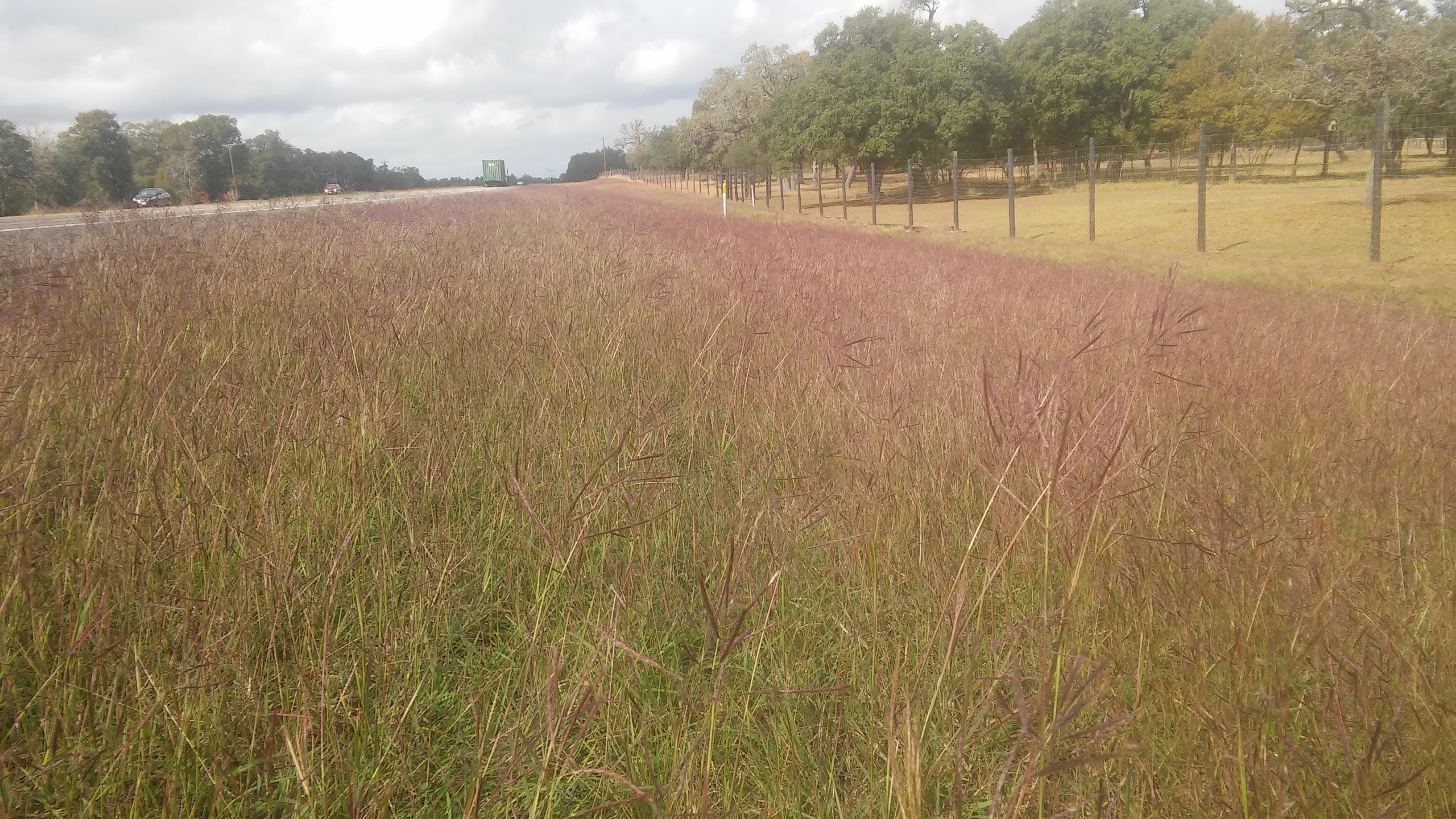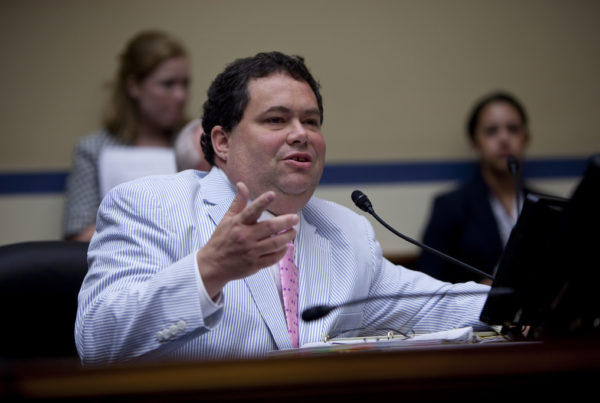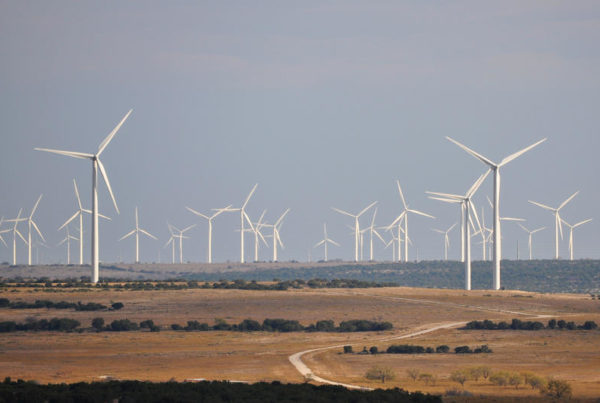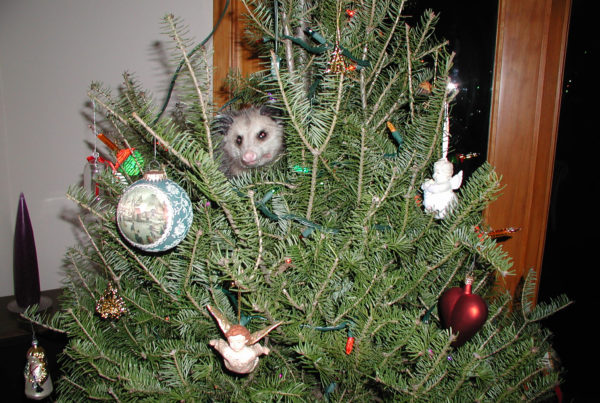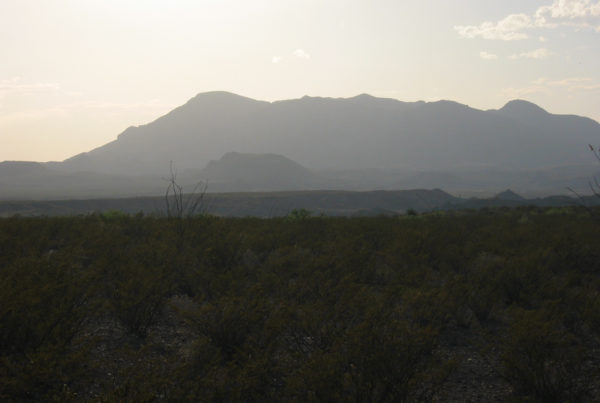In southeast Texas, farmers and ranchers are trying to eradicate a kind of grass that’s taking over the landscape. But it’s not working.
On a warm December morning in Colorado County, halfway between Austin and Houston, the sun is shining on a maroon pasture, thick with waving, waist-high grass.
“I mean that’s pretty. ‘Mhmm.’ That’s as pretty as you’d ever want to see,” says Gary Thomas, who raises cattle nearby.
And the grass is pretty. It’s called Kleberg bluestem. Thomas and Stephen Janak, a local Texas A&M Agrilife Extension agent, have been showing it to me all morning along with its cousin, King Ranch bluestem. To them, it’s more than just a pretty grass though – it’s a threat.
“It’s a non-native,” Janak says. “It’s a migrant here, it’s not supposed to be here and as pretty as it looks on the side of the road, it’s got the opposite effect on the land, and on people.”
Kleberg and King Ranch bluestems are conquering southeast Texas. Nutritionally, Janak compares them to cardboard. In just a few years they can wipe out hundreds of acres of grassland. And getting rid of it? Good luck.
“You have a couple of options: fight it, and spend a bunch of money fighting it, or fold,” Janak says.
But let’s back up a bit.
This story doesn’t start in a field in Colorado County. It actually starts about 200 miles south, almost 75 years ago. Back then, the bluestems weren’t a problem. They were a solution.
“It’s really a fascinating story,” says Forrest Smith. He directs the Texas native seeds program at the Caesar Kleberg Wildlife Research Institute, near the King Ranch. During the Dust Bowl period of the 1930s, pastures across Texas were ravaged by drought and overgrazing.
“Which had greatly reduced the grass forage base that was available,” Smith says.
Ranchers needed something that would withstand the drought. And at the King Ranch, the effort was spearheaded by a man named Nico Diaz. He was kind of a Texas Johnny Appleseed, except he planted grass instead of fruit trees. His obsession was finding grasses that could spread easily and thrive in Texas’ extreme weather.
So Diaz and his team cast a wide net, even experimenting with foreign grasses. One that showed promise was a Chinese strain, and another he found on the ranch itself was originally from South Africa. No one’s quite sure how it got there, but the two grasses seemed perfect for weathering a drought, even if they were akin to cardboard. He called them King Ranch and Kleberg bluestem. Problem solved.
“Some of these exotic grasses literally saved ranches,” Smith says. “And honestly the work they did had a transformative effect on the landscape.”
They were more transformative than Diaz could have imagined. More ranches planted them. The Texas Department of Transportation spread them along highways for erosion control. Stiff winds randomly scattered seeds, taking root wherever they happened to land. It wasn’t long until bluestem was everywhere.
“It’s definitely a situation where as a landowner you can’t win,” says Professor Jamie Foster of the Texas A&M Agrilife Research Center in Beeville.
When she took the job in 2009, she called around and asked local landowners what their biggest problem was. The answer: bluestem. Not all bluestems, just the Kleberg and King Ranch varieties. They were just what Diaz needed, but present-day ranchers wanted a more nutritious grass that wouldn’t push out native species. It had taken over everything. They tried to mow it. It didn’t work. They tried to plow it under.
“Short-term it did reduce the population, but that didn’t persist long-term,” Foster says.
Within a year-and-a-half, it grew back even thicker than before within 18 months. So they tried to set it on fire.
“But over the long-term it’s similar to mowing. It’s not a successful long-term strategy on its own,” Foster says.
So, what do you do? What can you do? Well there is one method that Foster found: restart a pasture from scratch. Which “is a very big burden because it’s equivalent to starting over,” Foster says.
You plow up an entire field, spray a powerful herbicide that kills anything it touches, and then plant seeds again. And then, hope the wind doesn’t blow bluestem into your field again. That’s an expensive problem for anyone, but especially if you operate within razor-thin margins like many farmers and ranchers do.
Back in Colorado County, bluestems are just one more pressure on the agricultural economy.
“We didn’t create the problem, we didn’t cause the problem, but the brunt of the expense is now on the farmer and rancher,” says Extension Agent Stephen Janak. “And it’s not like they can go to the cattle auction barn and charge more for their calves just because they paid more to produce it. ‘Ok, I had to spray more for this grass now I’m going to charge 10 cents extra per pound for my beef.’ It doesn’t work that way.”
Long-term, Janak and others hope that a chemical company develops a bluestem-specific herbicide. There’s no guarantee of that, and doing so would require several years and millions of dollars in research. Then what happens? It’s tough to say, because if there’s anything to take away from the story of the bluestems, it’s that fixing one problem can create another.


